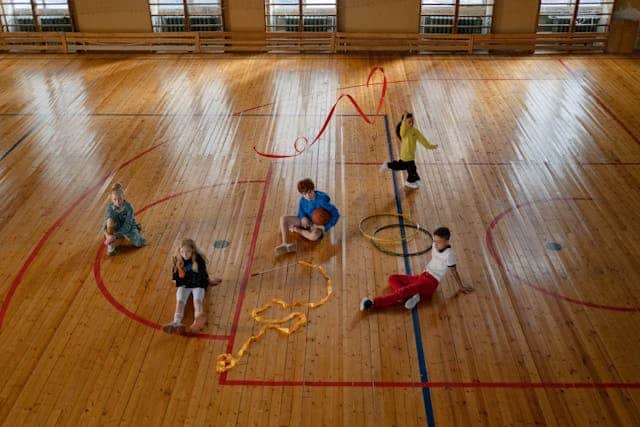WHO Global webinar for the launch of the new Guidelines on physical activity and sedentary behaviour – 26 Nov 2020
November 12, 2020
How do office spatial environments influence sitting time and face-to-face interactions?
November 18, 2020A new paper titled “Longitudinal associations of sedentary time and physical activity duration and patterns with cognitive development in early childhood” was recently published in the Mental Health and Physical Activity Journal. A summary of the paper, highlights and citation details are below. The full-text article can be accessed here.
Highlights
- Sedentary time (total duration and bouts) decreased across early childhood.
- Moderate-to-vigorous-intensity physical activity (MVPA; duration/bouts) increased.
- The favourable changes in MVPA and sedentary time are promising for young children’s health.
- Longitudinal associations between sedentary time, MVPA and cognition were minimal.
Abstract
Importance
Sedentary behaviour and physical activity are important to consider for optimal cognitive development. Few studies have examined patterns (i.e., bouts/breaks) of these behaviours in early childhood and longitudinal associations with cognitive outcomes.
Objectives
Examine: 1) changes in total duration and patterns of sedentary time and physical activity across three time-points, separated by approximately six-months; and 2) longitudinal associations of sedentary time and physical activity (i.e., duration and patterns) with cognitive development in early childhood.
Method
Participants included 100 children aged 2.5–5.0 years at time-point 1. Participants wore ActiGraph accelerometers and completed measures of cognition: inhibitory control (Fish-Shark Go/No-Go task), working memory (Nebraska Barnyard task), and general cognitive ability (Woodcock-Johnson III test battery) at two/three time-points. Multilevel growth modelling was used to examine total duration and patterns (i.e., bouts and breaks) of sedentary behaviour and physical activity over time and longitudinal associations with cognitive outcomes.
Results
Total sedentary time decreased (β [95% CI] = −9.24 [-15.76, −2.72]; β represents estimated change per year), whereas time spent in moderate-to-vigorous-intensity physical activity (MVPA; 5.65 [1.89, 9.41]) increased over time. A significant decrease in time spent in ≥10-min sedentary bouts (−9.76 [-13.56, −5.96]), and significant increases in sedentary breaks (13.41 [7.18, 19.63]) and time spent in 1-3-min (2.56 [0.96, 4.15]) and 3-5-min bouts of MVPA (0.86 [0.33, 1.38]) were also found. There was minimal evidence of longitudinal associations between the accelerometry variables and cognitive outcomes.
Conclusions
The observed changes in sedentary time and MVPA over time are promising for child health. Nevertheless, no meaningful associations with cognitive outcomes were found. Future studies with larger sample sizes should investigate whether specific types of activities that children engage in are associated with cognitive development overtime. Overall, this body of evidence could help inform future updates of guidelines concerning patterns of activity and health in the early years.
Citation
Verswijveren SJJM, Wiebe SA, Rahman AA, Kuzik N, Carson V. Longitudinal associations of sedentary time and physical activity duration and patterns with cognitive development in early childhood. Ment Health Phys Act. 2020;19:100340. doi:10.1016/j.mhpa.2020.100340




